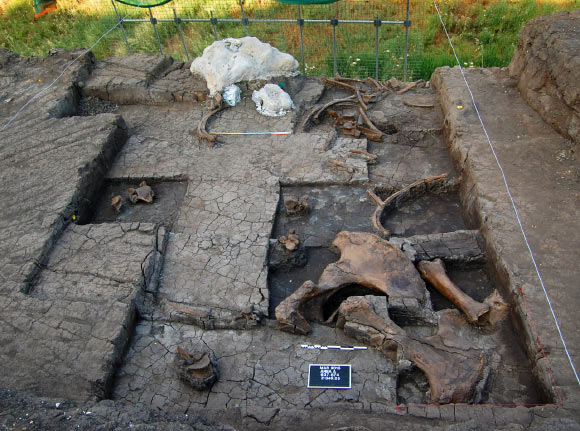A paleolithic elephant butchering site was found in recent months by joint researchers from the Ephorate of Paleoanthropology and Speleology of the Greek Ministry of Culture and the Paleoanthropology group of the University of Tubingen. The area, called Marathousa 1, is at Megalopolis, Greece and was believed to be one of the oldest archeological sites in Greece when it was discovered in 2013. Now, the elephant butchering that went on in the region has increased interest in the area.
A likely route for human migration into Europe, it also likely acted as a refuge for fauna, flora and human populations during glacial periods.
Located at an open-cast coal mine on what was once the shore of a shallow lake of a shallow lake, it has yielded stratified stone artifacts in association with a nearly complete skeleton of Elephas antiquus as well as the exceptional remains of flora and fauna.
There were stone tools found near the elephants that suggests that the early hunters are likely to have cut the meat from the bones. The discovery of cutmarks on elephant bones suggests that Marathousa 1 was an elephant butchering site.







































